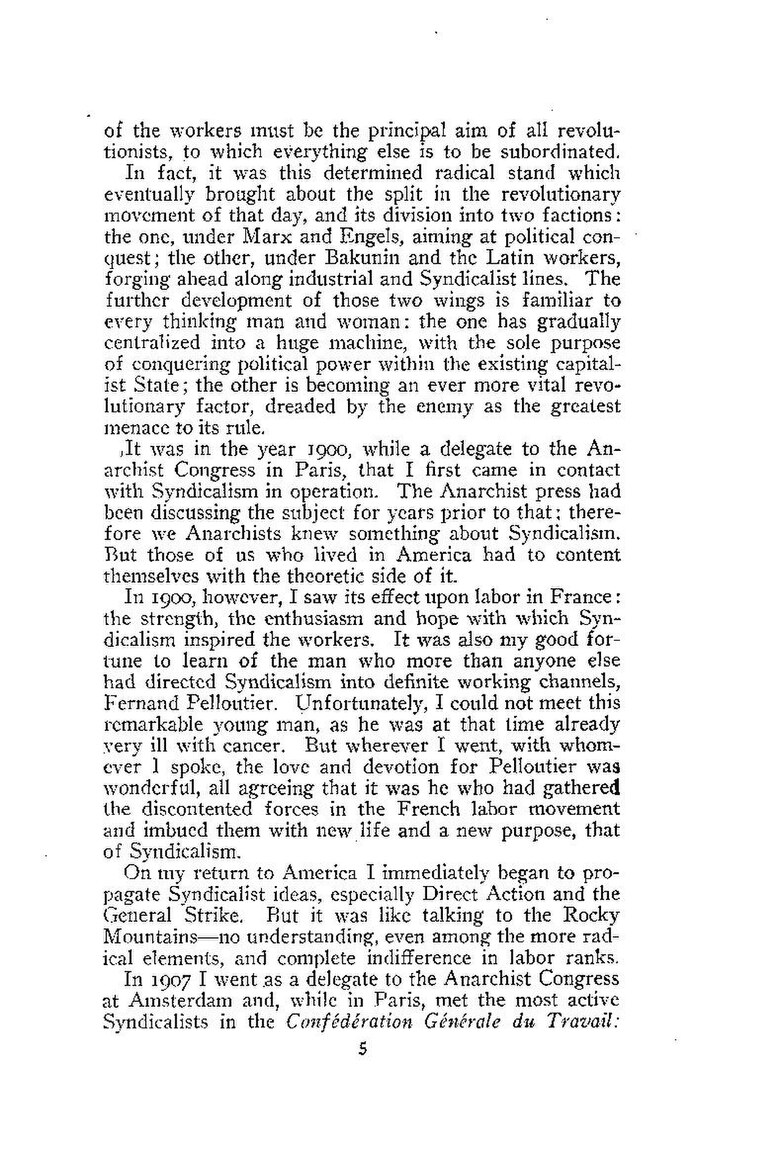of the workers must be the principal aim of all revolutionists, to which everything else is to be subordinated.
In fact, it was this determined radical stand which eventually brought about the split in the revolutionary movement of that day, and its division into two factions: the one, under Marx and Engels, aiming at political conquest; the other, under Bakunin and the Latin workers, forging ahead along industrial and Syndicalist lines. The further development of those two wings is familiar to every thinking man and woman: the one has gradually centralized into a huge machine, with the sole purpose of conquering political power within the existing capitalist State; the other is becoming an ever more vital revolutionary factor, dreaded by the enemy as the greatest menace to its rule.
It was in the year 1900, while a delegate to the Anarchist Congress in Paris, that I first came in contact with Syndicalism in operation. The Anarchist press had been discussing the subject for years prior to that; therefore we Anarchists knew something about Syndicalism. But those of us who lived in America had to content themselves with the theoretic side of it.
In 1900, however, I saw its effect upon labor in France: the strength, the enthusiasm and hope with which Syndicalism inspired the workers. It was also my good fortune to learn of the man who more than anyone else had directed Syndicalism into definite working channels, Fernand Pelloutier. Unfortunately, I could not meet this remarkable young man, as he was at that time already very ill with cancer. But wherever I went, with whomever 1 spoke, the love and devotion for Pelloutier was wonderful, all agreeing that it was he who had gathered the discontented forces in the French labor movement and imbued them with new life and a new purpose, that of Syndicalism.
On my return to America I immediately began to propagate Syndicalist ideas, especially Direct Action and the General Strike. But it was like talking to the Rocky Mountains—no understanding, even among the more radical elements, and complete indifference in labor ranks.
In 1907 I went as a delegate to the Anarchist Congress at Amsterdam and, while in Paris, met the most active Syndicalists in the Confédération Générale du Travail:
5
